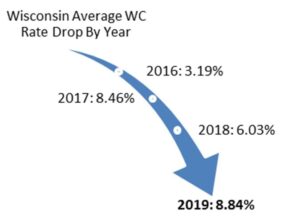Fed Holds Rates Steady, Cites Lack of Progress on Inflation

Officials have stressed that the decision to slow QT is independent of rate cuts and their timing. Fed Chair Jerome Powell will hold a press conference at 2:30 p.m. in Washington.
Inflation Roadblock
While price pressures cooled rapidly in the final months of 2023, progress toward the central bank’s 2% inflation goal has stalled in 2024. Meantime, the economy continues to expand on the back of a strong labor market and steady consumption and investment.
Wednesday’s statement reiterated that job gains have “remained strong” with a low unemployment rate, while the economy has expanded at a “solid pace.”
Data out Tuesday showed employment costs climbed in the first quarter at the fastest pace in a year, topping expectations and pointing to robust wage growth.
Three straight months of disappointing inflation figures have driven a major repricing of interest-rate expectations, with futures markets now showing just one cut this year.
That’s well below the three narrowly projected by Fed officials in March and the roughly six anticipated by markets at the start of 2024. Concerns that the central bank may not cut at all this year have also grown amid questions of just how much Fed policy is restraining the economy.
Against a backdrop of a resilient economy, the pickup in prices has also led to a change in tune among Fed officials. The rate cuts signaled by Powell in December relied heavily on a continued deceleration in inflation — something that hasn’t happened.
As a result, Powell said in April that it would likely take “longer than expected” to gain the level of confidence on inflation’s trajectory needed to lower interest rates. He added the central bank can keep rates steady for “as long as needed.”
The Fed’s preferred price gauge was up 2.7% in March from a year earlier, an acceleration from the prior period. Excluding food and energy, it advanced 2.8%.



